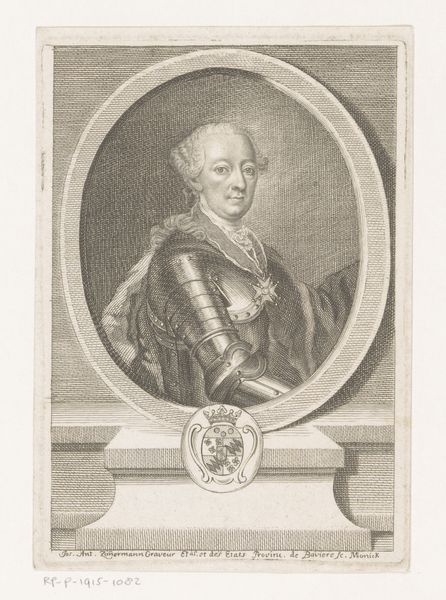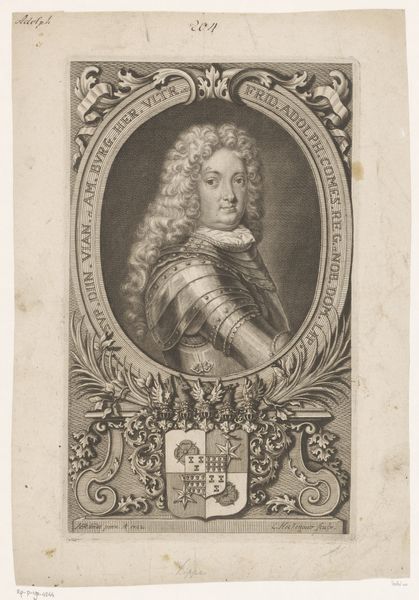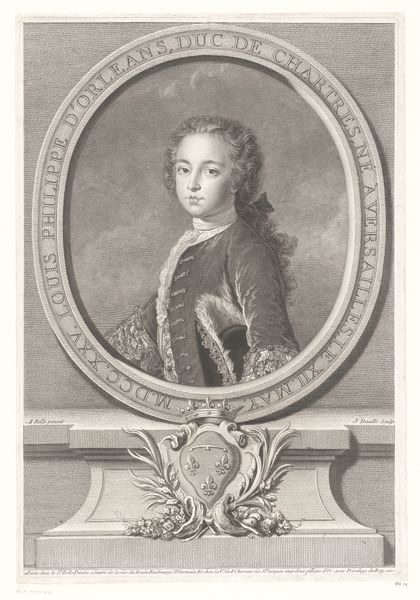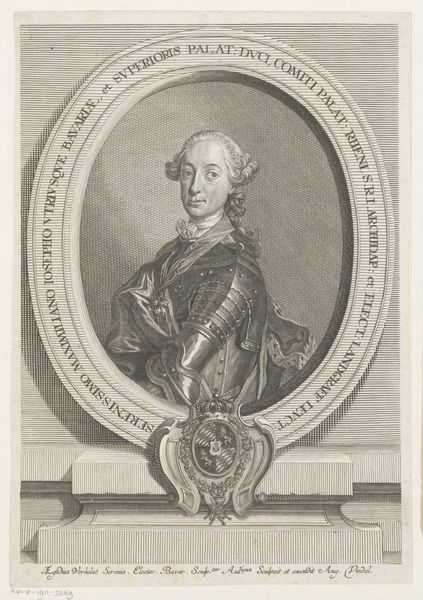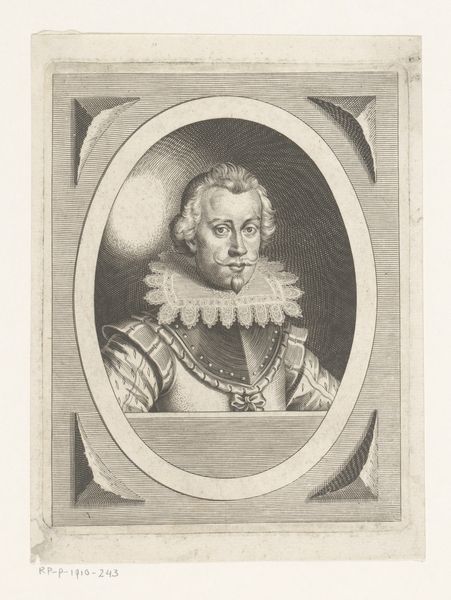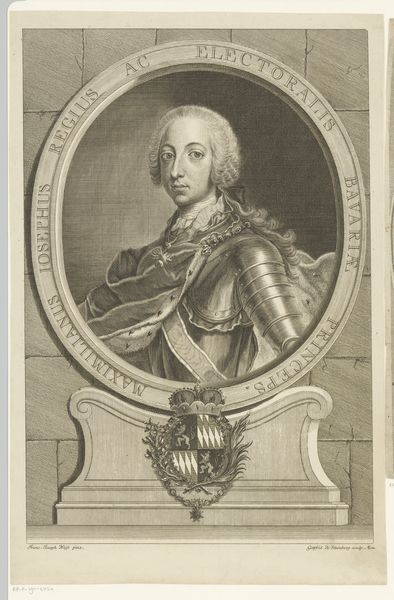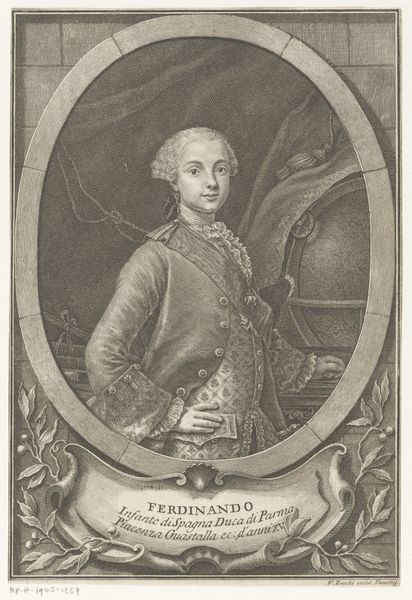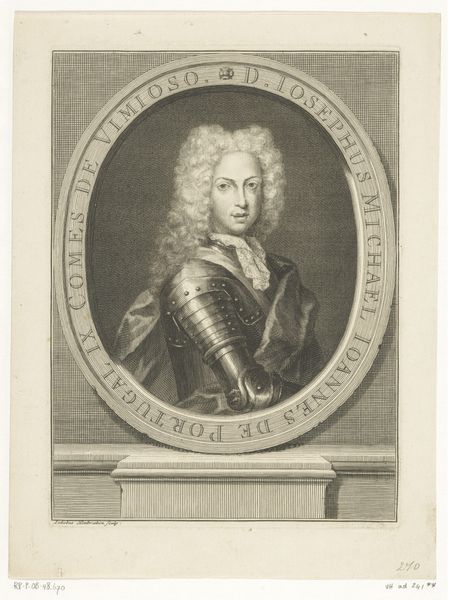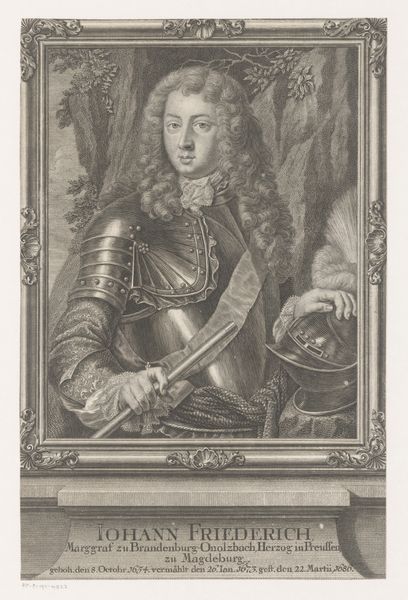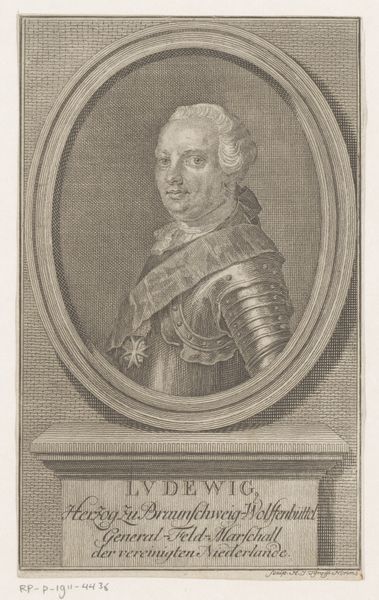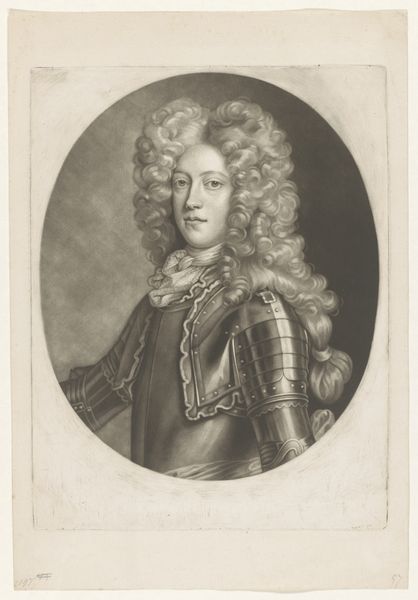
metal, engraving
#
portrait
#
baroque
#
metal
#
pencil drawing
#
framed image
#
history-painting
#
engraving
Dimensions: height 300 mm, width 196 mm
Copyright: Rijks Museum: Open Domain
This portrait of Friedrich III von Brandenburg-Bayreuth was made by Johann Wilhelm Windter, and exemplifies the craft of engraving. Look closely, and you'll see the print is made up of thousands of tiny lines. To make this image, Windter used a sharp tool called a burin to incise lines into a copper plate. Ink was then applied to the plate, filling the etched lines, and the excess wiped away. Finally, paper was pressed against the plate, transferring the ink and creating the print. The quality of the lines defines the textures of the work, from the sheen of the armor to the softness of the fur trim and the delicacy of the sitter’s face. Engraving was a highly skilled and laborious process, demanding patience, precision, and expertise. In contrast to painting, it allowed for the efficient reproduction and distribution of images. It was a key technology for disseminating information and propaganda in an era before photography, reflecting the intersection of artistic skill, industry, and social context.
Comments
No comments
Be the first to comment and join the conversation on the ultimate creative platform.
